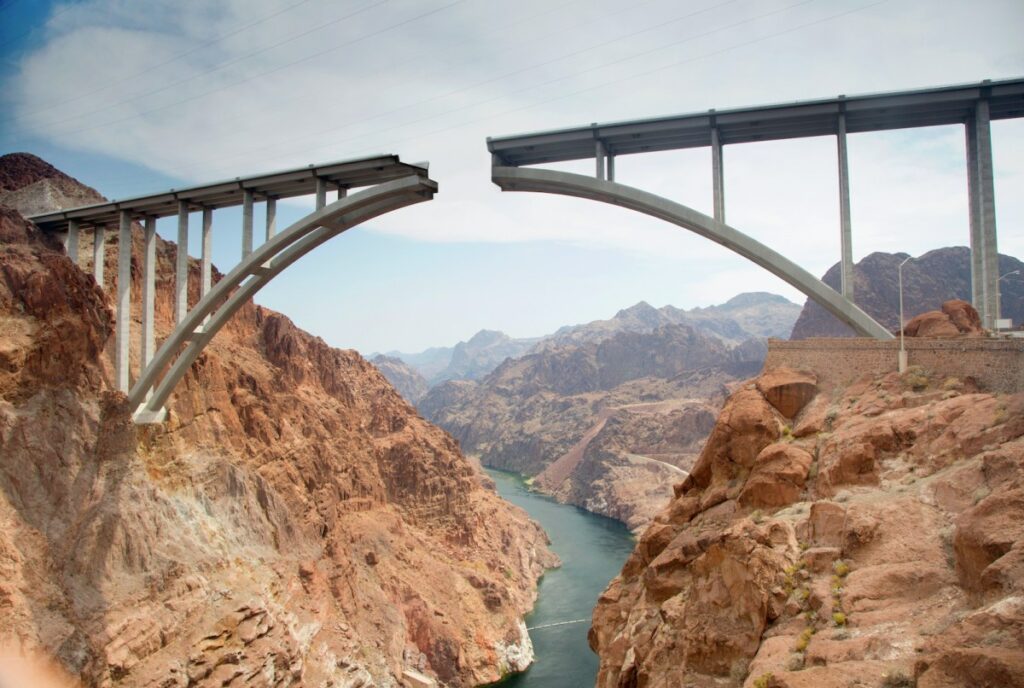The scourge of modern concrete is, perhaps surprisingly, rust.
Most concrete structures are laced with steel rebar to add strength, but if the metal corrodes, it can cause the concrete to fail prematurely. Bridges, which are exposed to water and salt, are some of the most vulnerable. About one third of bridges in the United States need to be repaired or replaced, which could cost nearly $400 billion over the next decade.
There are plenty of ways engineers cope with rust, from coating the rebar with epoxy to pouring extra concrete to buy some time before seeping water reaches the rebar. Eventually these measures fail, too. The only way to truly prevent problematic rust is to use stainless steel rebar, which isn’t cheap.
“It’s too expensive to be used in every bridge,” Steven Jepeal, co-founder and CEO at Allium Engineering, told TechCrunch. So cities and states will only turn to it for the most critical spans.
But Allium is proposing a compromise, of sorts, by covering regular rebar with a thin layer of stainless steel to prolong the intended life of a bridge from 30 to 100 years.
“As long as we’re getting full coverage of the surface, a thin layer is enough stainless steel to where it’s going to resist corrosion for hundreds or thousands of years,” said Samuel McAlpine, co-founder and CTO at Allium.
The startup’s stainless steel-layered rebar was recently used in several bridge deck replacements, including one on Interstate 91 in Massachusetts and another on U.S. Highway 101 in Mendocino County, California. It also contributed to a commercial boat yard in Key West, Florida, Allium exclusively told TechCrunch.
Techcrunch event
San Francisco
|
October 27-29, 2025
For critical bridges that carry lots of traffic, engineers sometimes specify stainless steel, which costs around five times more than regular rebar. Governments consider the added costs are worth it if they don’t have to shut down a major artery.
But for most other bridges, they tend to specify epoxy-coated rebar, which is only about 25% to 50% more than uncoated rebar. Epoxy-coated rebar needs to be housed in covered storage, and any welded spots or nicks in the coating need to be patched, both of which add additional indirect costs.
Allium is pitching its stainless-clad rebar as a replacement for epoxy-coated. The company aims to match the price of epoxy coating and possibly undercut it in the future. Jepeal said, when installed, Allium’s rebar should cost less because it doesn’t need to be handled as carefully. The startup’s rebar also won’t need additional concrete that is sometimes added to bridges to forestall rusting.
“This extra layer of concrete isn’t structural. It’s just meant to try to insulate the rebar and delay how long it takes for the salt to get to the rebar,” Jepeal said. Eliminating that could trim cement use by 10%. And because the rebar isn’t as susceptible to corrosion, it should allow transportation departments to specify the use of greener cements, which tend to be less alkaline than standard mixes, McAlpine said.
Allium’s process clads 7,000 pound billets of steel with a layer of stainless steel, essentially welding wires to the exterior until it’s fully coated. That billet, which is typically between six to eight inches square and 40 feet long, is then fed through a series of rollers until it reaches the desired thickness, which ranges from about a third of an inch to a couple inches in diameter.
“By cladding a smaller surface area with a thicker layer and integrating into the mills process, we can do something that’s a lot cheaper, a lot more scalable, a lot easier to control the quality of,” Jepeal said.
As the billet is getting thinned out, growing up to 150 times longer in the process, the stainless steel does as well. Ultimately, each piece of rebar ends up with about 0.2 mm of stainless cladding.
Even with that small amount, “you’re not going to corrode through that stainless steel in concrete, basically,” McAlpine said.


